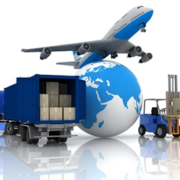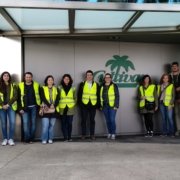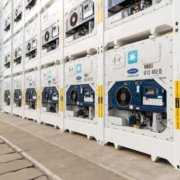Temperature controlled logistics: Spotlight on pharmaceuticals
Professionals operating in the field of temperature controlled logistics need to take into account the condition of the products across all stages of the supply chain – beginning with storage and product preservation, through the transport of the cargo that is sensitive to changes in temperatures or varying atmospheric conditions, up until delivery to the customer. This broad spectrum of products includes pharmaceuticals, which need to be handled under particularly strict conditions as any changes may affect chemical stability or alter their properties, and cause serious health-related consequences to the end-consumers as a result. To ensure that these changes do not occur, pharmaceutical companies have to be able to prove that their products are transported through a stringently temperature controlled supply chain. It is vital that all parties involved, from the producer, conveyor to end customer are assured and can prove the integrity of the cargo.
The responsibilities in the temperature controlled supply chain vary among each of the parties. While the carrier needs to be responsible for preserving the transport conditions indicated for each type of medicine, the producer needs to ensure that the carrier is aware of the acceptable margins of error for temperature changes, what are the risks that may be acceptable, and what actions should be avoided to preserve the integrity of the product, etc.
Companies operating in the pharmaceutical cold chain should be kept up to date with the latest market regulations and standard rules. Due to the complexity of transporting these types of cargo, this task can be challenging. In the EU, the Directive 2001/83/EC is the foremost legal document guiding the production, distribution and use of medicinal products. In addition, other organisations regulate and establish new procedures, including theWorld Health Organization, Parenteral Drug Association, International Air Transport Association, Pharmacopeia, among others.
Though it is important to recognise that different medicines and different transport methods have their own characteristics of preparation and transport, there are general considerations that must be taken into account regardless of the pharmaceuticals being transported. This includes questions such as whether the storage facilities at the destination similar to those of the origin. Refrigerated vehicles or passive cooling systems will have to be considered to ensure the drugs not be compromised en-route. Minimising the amount of time the pharmaceuticals spend at ambient temperatures is critical, especially in warmer climates. The load needs to be securely stowed inside the transport units to ensure uniform air circulation and temperature distribution. Frequently, the use of temperature and humidity measuring devices is recommended.
Air freight temperature controlled logistics
Air cargo transport is the most popular method of transport for cargo with high levels of temperature control. Air transport is advantageous when it comes to speed issues, overcoming geographical obstacles or lack of infrastructure for other means of transport. The main weakness of this type of transport? It is extremely expensive, both in financial costs and in terms of the environmental footprint.
Sea freight temperature controlled logistics
Around 20% of pharmaceutical payloads are moved via ocean freight. Sea freight temperature controlled logistics is substantially cheaper when compared to air freight shipping. It also offers a more controlled environment in comparison to air transport. There are fewer control points and disruptions, as sea freight cargo will not be touched until it reaches its final destination. With new technologies in the maritime sector, the transport units allow tracking and monitoring in real time (a big plus for the clients!). There are few load movements, which limits the potential breaks in the cold chain and potential exposure of the products to ambient temperatures. The main weakness? It is considerably slower than air transport.
In general, there is an enormous mindset that this type of products due to their characteristics and specificities must be transported by air.
The main question thus is: Air or sea freight transport? Sea freight, done well, is an excellent mode in the right circumstances, though the same is true of airfreight. It is understandable that emergencies will always require medicines to be transported rapidly from point of origin to destination, but with tighter regulations on the temperature control and cold logistics chain in the pharmaceutical industry ensured by the maritime authorities, the gap between air and sea freight is closing in.
Intrigued? Check out our upcoming course on Temperature Controlled Supply Chains.
Written by:
- Raquel Nunes – Co-Founder of YoungShip Portugal







